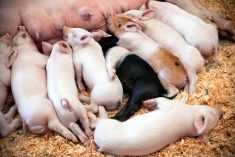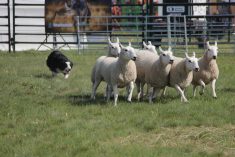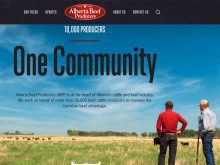Hauling feed | Rising waters are testing the economics of ranching in Manitoba’s Interlake region
WOODLANDS, Man. — Orval Procter is finally past having to haul feed to his farm, something he did again this winter.
Now he’s getting ready to ship his cattle off the farm for the summer.
He doesn’t want to do either of those activities, but they are sad facts of life for farmers living near the swollen Shoal Lakes of Manitoba’s Interlake region, which was once prime cattle country.
“They’re doing OK, but it’s costing me a fortune,” Procter said on a warm spring day as his few functional pastures slowly started to green up and his calves and cows waited for new growth to become big enough to eat.
Read Also

Dennis Laycraft to be inducted into the Canadian Agricultural Hall of Fame
Dennis Laycraft, a champion for the beef industry, will be inducted into the Canadian Agricultural Hall of Fame this fall.
Unfortunately, Procter has so little pasture and hayland left that the economics of his herd have been wrecked and he’s reduced his herd size by a quarter.
That’s a common situation around the lakes.
Farmers who had self-sufficient cattle operations now have to haul in feed during the winter and ship their cattle off the farm during the summer to places that have pasture.
Farmers in this region are victims of a forgotten flood, which has been occurring since 2004 as lake levels steadily rise and spread wide across cattle country.
Road construction in the region cut off the landlocked lakes’ drainage channels decades ago, which previously allowed water to seep out and kept levels and the shoreline stable.
The water now has nowhere to go. It rises and falls in fits and starts but keeps getting higher and wider.
Procter has lost the use of two parcels of pasture and hayland that he owns directly. As well, only 100 acres of a 1,900 acre piece of crown lease that he and some relatives use now have grass. The rest has become part of the Shoal Lakes, which used to be a kilometre and a half away.
The flat land here at the bottom of glacial Lake Agassiz doesn’t handle excess water well. A few centimetres spread far across the landscape.
Lake levels have increased by two and a half metres since 2004 and the 2011 floods caused them to rise to more than three metres above pre-2004 levels. Since then they have fallen only one metre.
It was hard to imagine Procter’s flooded land supporting cattle during a recent tour, but the ghosts of productivity could still be seen. Barbed-wire fence lines ran across plains of still water, with seaweed hanging from the barbs. A stranded corral formed an island at the end of a sunken road.
Patches of dead, drowned trees stood far off in the distance. Until a few years ago they were 400 metres from the shoreline, on the dry side, but now are hundreds of metres inside the lake.
As Procter talked about this land, which his family has farmed since the 1880s, an all-terrain vehicle came sloshing and bumping along the saturated road from the opposite direction. Procter recognized his cousin, Fred, 82, who also farms land lying near the lake shore.
“Quite a sight, isn’t it?” Fred said. “We used to have cattle out there, you know.”
The Procter cousins looked across the land, now lost to agricultural productivity, but didn’t seem bitter. They remarked cheerfully on the pelicans, cormorants and waterfowl that now make their homes here, along with millions of frogs and billions of reeds.
Fred, who farms with his son, has also downsized his herd by about a quarter because of the chronic lack of feed in the area. It’s a common story around the lakes.
Procter said most farmers just want to be able to go back to being self-sufficient in feed, but that would require engineering work to allow water to seep out of the end of the lakes and pass under and through the roads that caused the problem. That’s something neither federal nor provincial governments have been willing to fund.
Instead, many farmers are involved in protracted buyout and compensation negotiations with the provincial government. It has created ill will as farmers consider what they are being offered to be inadequate to buy replacement land.
“I can’t buy anything with that,” Procter said about what he’s been offered. Land near him, which is in commuting distance to Winnipeg, costs more than the “fair farm value” he has been offered for what he has lost.
So he and many other farmers are facing another year of paying for summer pasture elsewhere, hauling in feed during the winter and wondering how to get back to some sort of reasonable cattle production economics.
And all the while, the lakes rise and spread.
















